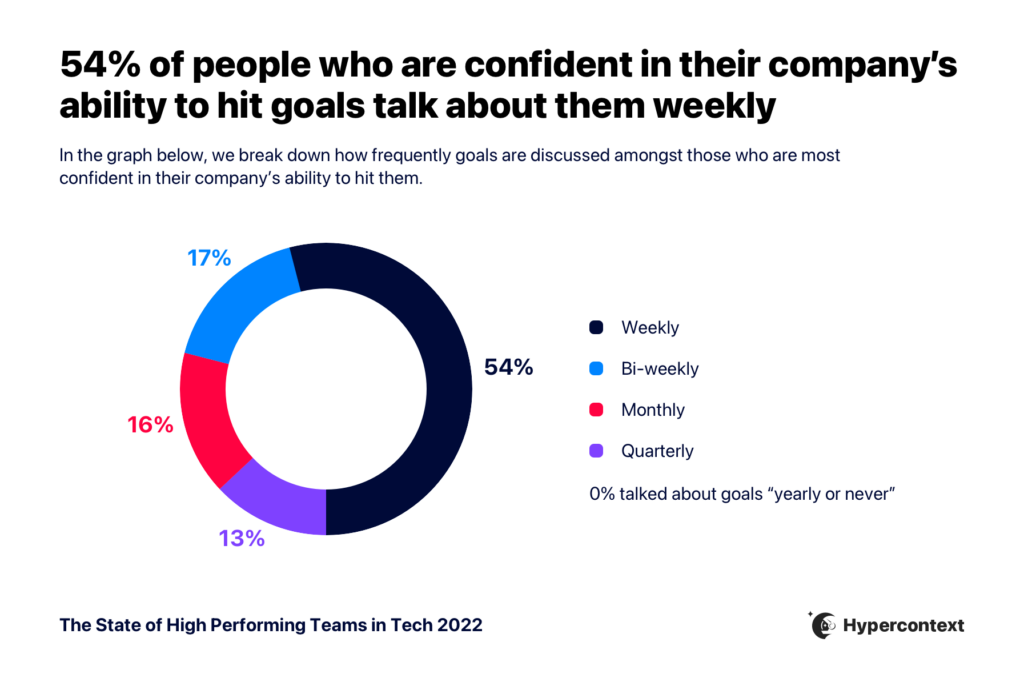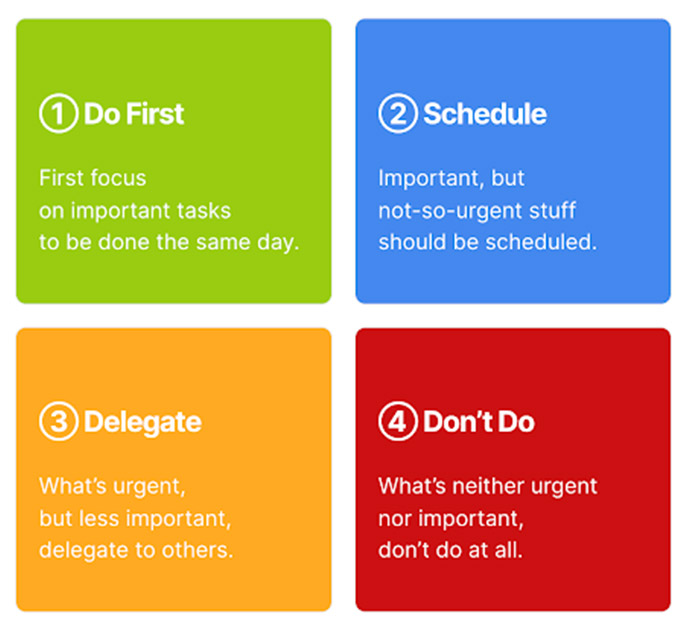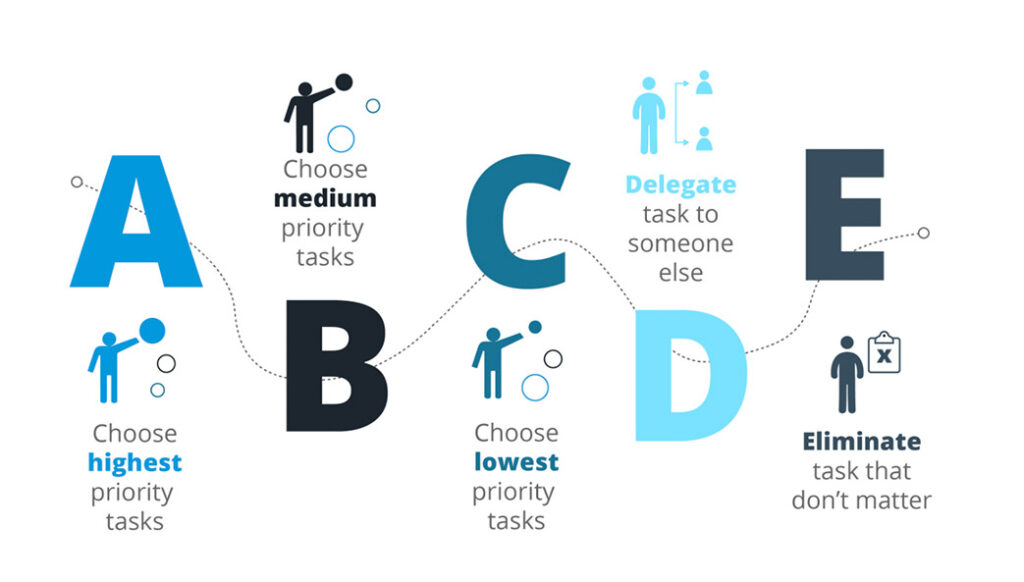How to prioritize tasks when managing a team
Prioritization is easier said than done — especially when you're trying to guide the priorities of your whole team. Learn five easy management methods for prioritizing essential tasks.
 Guest Contributor
Guest Contributor
Warning: Undefined array key "category" in /www/hypercontext_216/public/wp-content/themes/Soapbox/hype-files/sections/article/content.php on line 10
Ever feel like there are a million and one things your team needs to do to achieve your goals? Amidst competing deadlines and a growing to-do list, how is it possible to set yourself and your team up for success?
Prioritization.
Through effective prioritization, you can ensure you complete your most important tasks on time, on budget, and at a high level.
But effective prioritization isn’t easy to achieve. It takes a manager who has a clear understanding of how to arrange tasks, knows what each task entails, and communicates this effectively to their team.
In this article, we’ll walk you through:
- The challenges of prioritizing and managing time
- Why it’s important to prioritize
- How to prioritize tasks in 5 steps
Challenges of prioritizing and managing time
If prioritization were easy, every company in the world would be operating at maximum efficiency.
But many challenges can pop up when trying to set priorities for your teams.
Overlapping priorities
The first issue you might encounter is simultaneous projects that all pull from the same company resources, like tools, equipment and employees.
It stands to reason that if your team members are all giving 20% of their efforts to 5 different projects, nothing is getting their 100% focus. Quality dips as a result. Or, nothing even gets done.
Unexpected obstacles
Then, of course, you have those unplanned occurrences that can throw everyone for a loop. When the unexpected happens, something like a power outage, an unplanned employee absence, or even a global pandemic, it can send your projects reeling.
Unrealistic expectations
Another very common issue managers looking to prioritize tasks face centers around expectations. If you’re expecting your employees to go above and beyond to deliver projects in a short amount of time, you’ll find yourself disappointed and they’ll find themselves burnt out.
When trying to prioritize your team’s time effectively, you have to be realistic.
Why is it important to prioritize?
It’s important to prioritize for a number or reasons — all of which are imperative to a high functioning team. Let’s dive into some of the reasons it’s vital to prioritize:
📆 Avoid missed deadlines
Missing deadlines and sending projects into limbo while you wait for other tasks to be completed wreaks havoc on your budgets. That’s why you need to understand your company objectives to determine the order in which to prioritize tasks.
🤝 Keep your team aligned
Prioritization helps you keep your team aligned, ensuring that you’re all working toward the same goals.Failure to align your team could lead to team members striking out on their own in counterproductive ways. If there’s a lot to do and your team members don’t know what to prioritize, they could be spending their time and efforts on the wrong projects.
😅 Avoid burnout
It’s also a great way to avoid burnout. While it might seem like everything needs to get done right away, it’s not possible. Burnout is a huge challenge for remote managers, and prioritizing tasks allows them to ensure the right work gets done when it needs to, in a way that doesn’t negatively impact employees.
Remember, prioritization is about impact. What seems like the most important or biggest tasks in your pipeline might not always be your top priority. Rather, you need to look at the tasks with the highest impact on your company. Let’s take a closer look. 👇
5 steps to effectively prioritize tasks
By following these five helpful steps, you’ll be able to better prioritize your team’s tasks.
1. Define clear objectives and goals
Uncertainty is the enemy of productivity. If everyone is working without clear benchmarks and goals, they may all be working toward something different.
Make sure that your team understands their goals and is crystal clear on what’s expected from them in general and for each new project or task.
This means discussing goals regularly. According to Hypercontext’s State of High Performing Teams in Tech report, 54% of people who are confident in their company’s ability to hit their goals discuss them weekly.

If your team understands the impact and importance of their work in relation to the bigger picture, they’re going to place greater care and ownership. Ensure your team clearly understands what the intended outcome is each week/sprint/quarter/year to prioritize effectively.
2. Organize a task list for team members
Beyond verbally communicating goals to your team members, it’s helpful to set up a task list for every project so the entire team can access it at any time. This helps keep everyone aligned and accountable for their role.
Try using a collaborative project management tool for this, like Todoist or Trello. Everyone, from entry-level employees to team leads, should be able to see their assigned tasks and know which take priority. This can usually be done in a project management platform by assigning a visual aid like a red flag (🚩) to any task that takes precedence over others.
The accessibility of an online task list allows you to update the whole team in real-time, making for more seamless collaboration. This helps everyone stay on the same page when something new drops into your workflow or data pipeline, and allows you to prioritize the task appropriately.
3. Identify what’s urgent and what’s important
Sometimes it feels like everything is important.
But, there’s a difference between importance and urgency.
While urgent tasks are obviously urgent for a reason, it’s essential to not lose sight of your important tasks.
Understanding what’s urgent and what’s not helps create a schedule that allows you to complete urgent tasks right away, but also make time for other important projects — ensuring urgent tasks gets done in a timely manner and important, less urgent, tasks don’t fall off your radar.
The Eisenhower Matrix is a great way to help determine the difference between an urgent task and an important one.
As the name suggests, Dwight D. Eisenhower, the 34th president of the United States, developed the framework. He developed the Matrix to prioritize all the important tasks laid before someone with his significant responsibilities. It’s since become a staple of prioritization in the business world.

Here’s how it works:
- Do First: Where you place your most urgent tasks to do on the same day.
- Schedule: Includes items of importance that you need to schedule out for the future.
- Delegate: Includes urgent tasks that you can delegate to others within your organization.
- Don’t Do: As the name implies, this is where you put tasks that are neither urgent nor important, and ultimately don’t need to be done (but maybe you want to get done). This could be something like starting a football pool in the office or taking lunch orders.
4. Differentiate tasks with similar priorities
Even once you’ve identified your “do first” tasks, “delegate” tasks, and so on, competing priorities will inevitably pop-up throughout the day. Or, maybe you simply have too many “do-first” tasks.
For instance, it might be high priority for your sales team to conduct outreach to your list of leads. But, with more than one list, it’s important to differentiate them so high priority leads more likely to convert quickly are given priority over cold leads.
So, how can you determine who your team should reach out to first?
Try applying the ABCDE method to figure out how they should be prioritized.

- A: Important high-priority tasks to be done right away.
- B: Important tasks, but while a delay might inconvenience a few people, they don’t carry the weight of an A task.
- C: Tasks that don’t carry any consequences and are low priority.
- D: Stands for delegate. Pass these tasks to someone else who isn’t working on A or B tasks already. (this is where a collaborative task list is really handy!)
- E: Stands for eliminate. These are tasks that have no bearing on your company whatsoever.
Let’s apply ABCDE to our sales outreach example. 👇
A-tasks would be reaching out to hot leads — those who have shown an extreme interest in your company and are ready to convert.
B-tasks would be reaching out to warm leads. These are the people who are aware of your services and have requested more information. They’re still formulating an opinion about you and aren’t ready to convert right this second. They’re important, but you have a little more time to reach out.
C-tasks in this example would be cold leads that haven’t reached out to your team at all. This could be cold calling or sending information around to potential clients in an attempt to set up an appointment. It could also be experimental and unproven prospecting tactics that you’ve been meaning to try.
D-tasks are essentially C-task-level prospecting outreach initiatives that your team doesn’t have time to do.
E-tasks are irrelevant outreach ideas that you’ve decided aren’t worth pursuing.
5. Be flexible and adaptable
Life is always going to throw unexpected curveballs at your team. Be realistic about what’s achievable and what’s not, and then be willing to adapt. You have to have contingency plans in place to hold onto your prioritization efforts even when things go awry.
The recent pandemic is a prime and extreme example of this.
The pandemic hit in early 2020, and just like that, it was no longer safe for unessential businesses to operate in person. Most companies were unprepared, and suddenly had to implement systems accesible for remote work. This caused priorities to be shifted.
Whether big or small, obstacles are inevitable. But, when you prioritize effectively and stay realistic, it’ll be easier to adapt and stay on track to achieving your goals.
Prioritize prioritization
There you have it — 5 tips that will help you prioritize tasks for your team.
By defining clear objectives and goals, organizing task lists, identifying urgent vs. important tasks, differentiating between competing priorities, and maintaining a flexible and adaptable mindset, you’ll be able to prioritize effectively with your team.
If you’re looking for more leadership tips on how to manage a high-performing team, sign-up for our weekly emails. 👇

Kevin J. Kessler is a writer and associate editor for the content marketing firm Codeless.
What to do next
You made it to the end of this article! Here are some things you can do now:
- Our YouTube channel is full of tips on management skills and team building.
- Learn more about Spinach and how it can help you run a high performing org.
- If you found this article helpful, please share it with others on Linkedin or X (Twitter)
